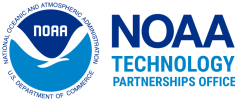Partnerships Overview
Agreement Types and Authorities
NOAA has authorization from the Congress to enter into partnership agreements with outside entities to help us accomplish our mission. Depending upon the authority, NOAA offices have the ability to do, or request others to do, a wide variety of work related to our mission.
The table at right shows the most common agreement types, along with the relevant section of the U.S. Code where the authority is granted to NOAA. This table is not comprehensive, but it is a good place to begin thinking about what is, and what is not possible, when seeking to work with NOAA.
The Technology Partnerships Office is responsible for administering a very flexible and powerful agreement, the Cooperative Research and Development Agreement or CRADA for NOAA. If you are an innovative company operating in NOAA’s mission space and want to work with us, read on!
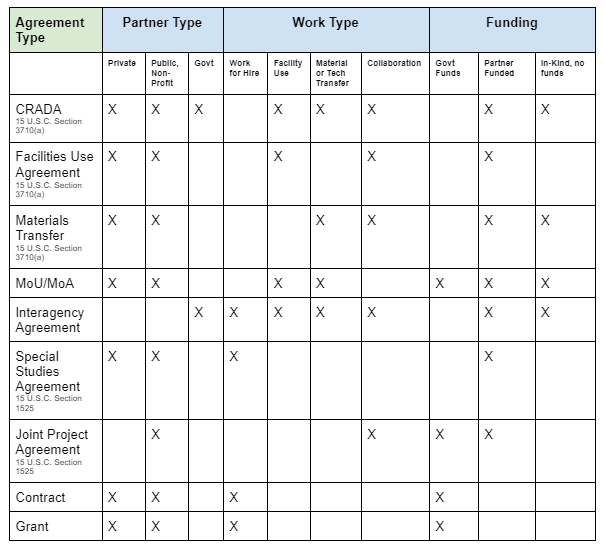
Cooperative Research and Development Agreements (CRADAs)
The Cooperative Research and Development Agreement or CRADA is one of the easiest and most flexible agreements for working with NOAA. A CRADA is a written agreement between a private U.S. company, university, or other entity, and a NOAA Laboratory or Science Center to work together on a collaborative research and development project.
The CRADA allows NOAA and non-Federal partners to maximize their resources by sharing technical expertise in an environment where intellectual property emerging from the effort is protected and the partner is encouraged to commercialize the results of the activity. The CRADA is based on a pre-approved legal template, which is designed to speed the time for approval of the agreement within NOAA.
Under a CRADA, NOAA may contribute staff, facilities, expertise, and intellectual property to a collaboration, but not funding. The CRADA partner, or partners, may contribute any of the above, but may also contribute funding to an agreement.
Ready to get started with a CRADA? Go to our Getting Started page to learn more.
Learn more about our active CRADAs and read CRADA success stories.
NOAA CRADAs by the Numbers
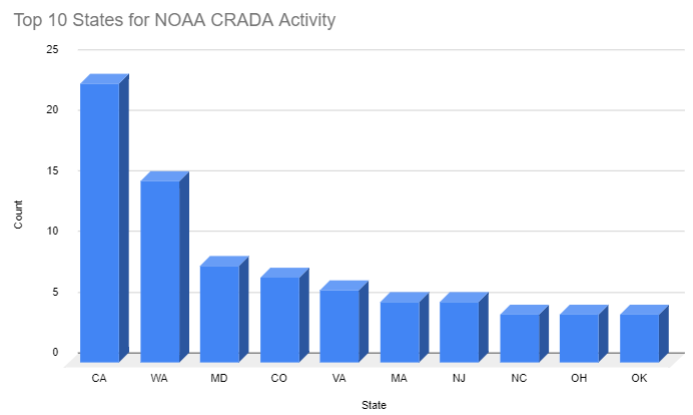
NOAA has Labs and Science Centers across the country where we conduct the research and development to support our mission. The graph on the left shows the states where we have signed the most Cooperative R&D Agreements.
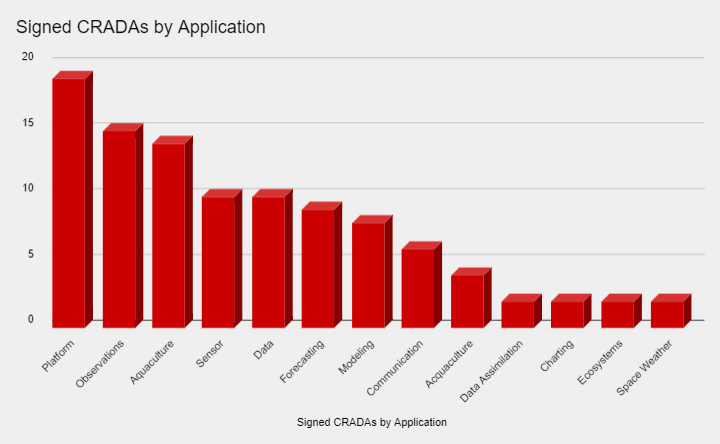
NOAA’s CRADA partnerships span a wide range of mission-relevant areas. The following graph shows the mix of historical partnership applications as of FY21.
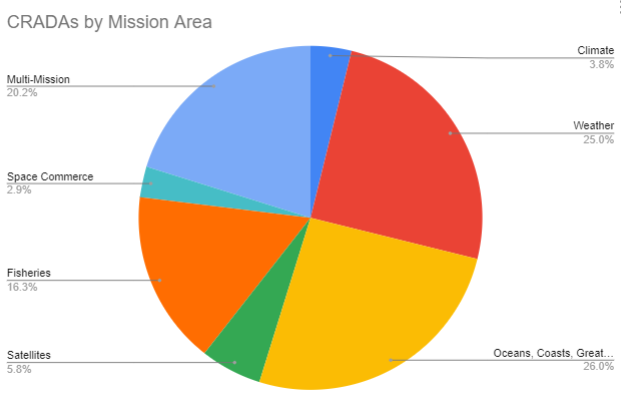
The R&D conducted under Cooperative R&D Agreements with NOAA varies across our broad mission areas.
Learn more about the economic benefits of NOAA’s CRADA activity in our Economic Benefits section.
